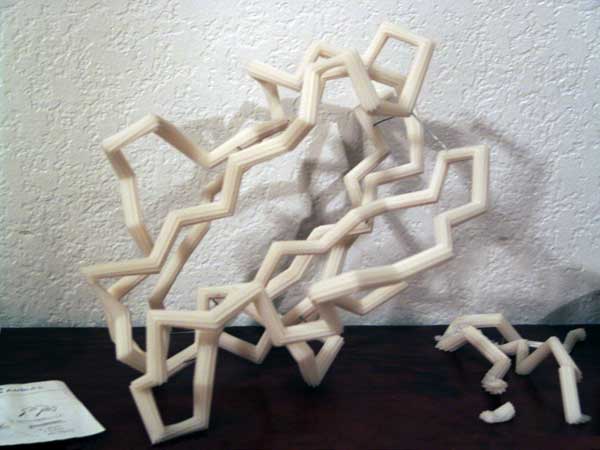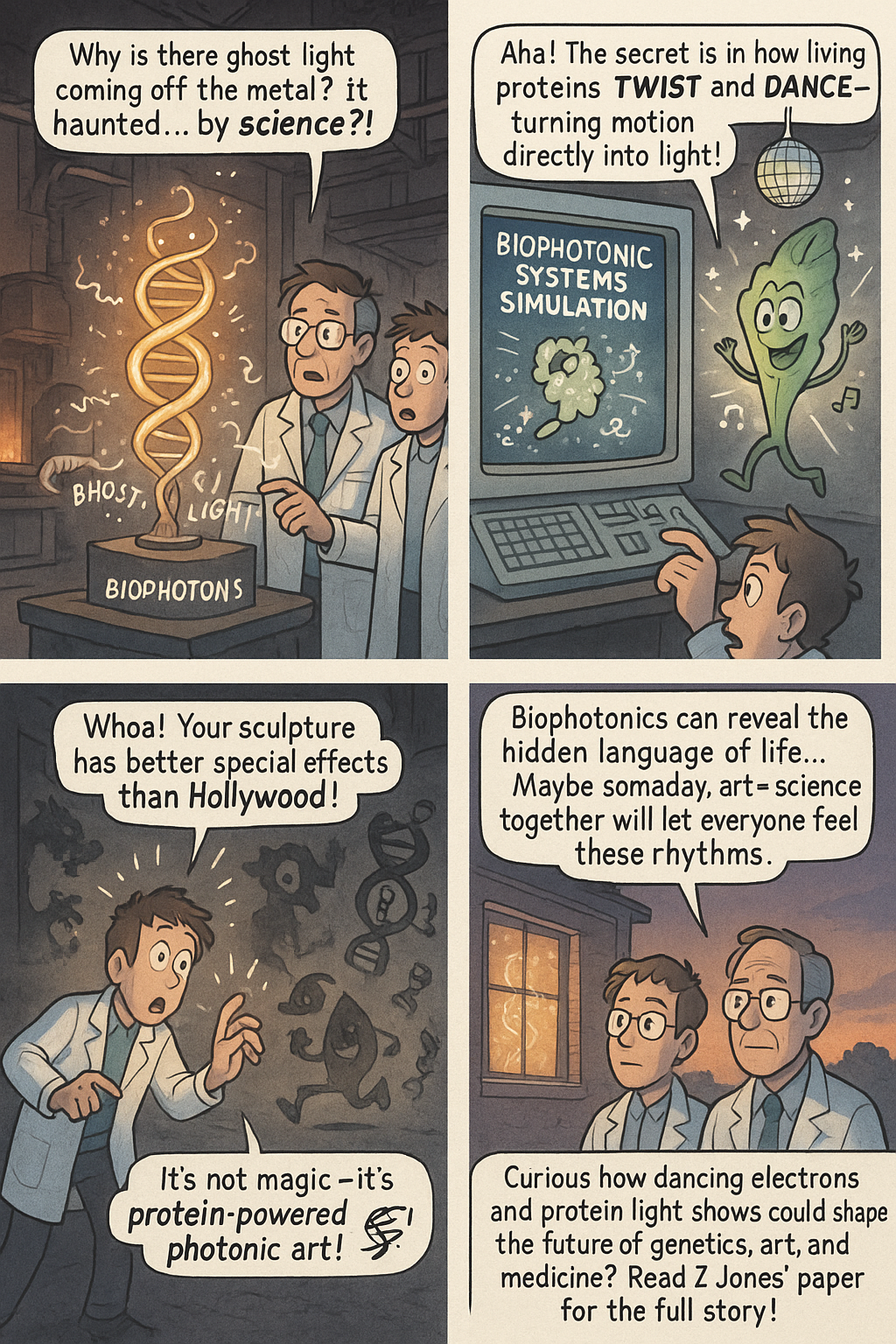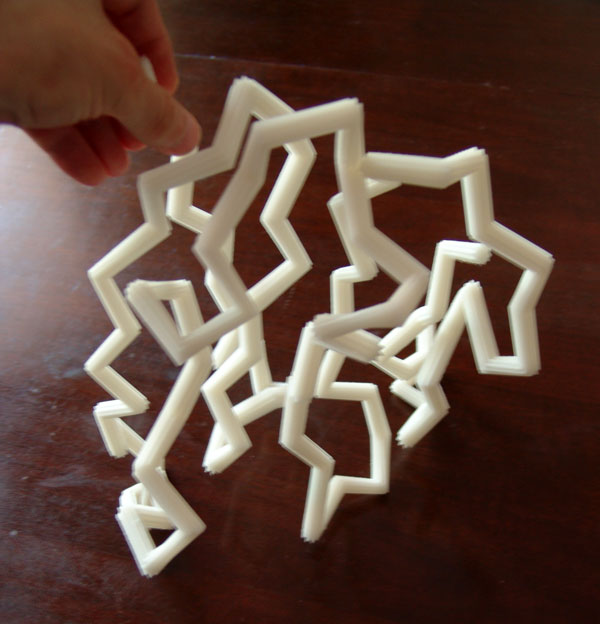|
Biophotonics in the Rendering of a General Systems Language
New Alexandria Collaboration: Shawn Lawson, David LeBard Course Advisement: Mary Neubauer, Dan Stanzione, Hessam Sarjoughian |
|

|

|
|
Overview
My current foundry research methods combine a calculus of physics, grid computation (supercomputer) algorithms, systems modeling for simulation, and biochemistry with classical foundry techniques. The aim of this fusion is a sculptural work in cast metal that gives tactile, haptic, and visual channels for the audience to become aware of the protein dynamics that produce biophotonic light. This light is unique in that it occurs through the transduction of organismic (thermodynamic) motion into light, proposed via a symmetry in bonded electron orbitals. Revealing biophoton dynamics allows us to more deeply understand the way living systems express themselves. The interface provided by the resultant sculptural form speaks to a concept of 'geometric syntax,' in this case connected to the relationships within genomics. Complementarily, patterns in language and genetic sequences can be analyzed using the same algorithm. The correlation suggests an early symmetry in the emergence of these systems. Thus the aspects of such base geometric dynamics in proteins may create a way to model the emergent forms of a general systems dynamic. As these underlay the patterns of planetary ecology, they lay the foundations of food, medicine, genetics, and mythology. These the are cornerstones of our culture and its Arts. The rhythm of these environmental phenomena gives rise to grammars of expression and speech. In reverence of nature's whole, or our own humanity, we use that speech to render stories. Inspired by these stories we explore models of order; law and physics each their own evolution of mythology. These arts emerge a coherent whole that yet evokes reflection upon its emergent parts. As each of these is underlain by a generally modeled system, I propose that 'geometric syntax' forms one of the components of a General Systems Language. I feel that the sculptural work proposed offers a way of interfacing 'geometric syntax.' Moreover, I feel that it does this via a sensory channel that is congruent to phenomena that it models. The protein chosen for the sculptural work is the spinach plastocyanin that enacts photosythensis. It is incorporated into this work with the collaboration of David LeBard. Further knowledge of this protein may allow us to consider energy creation via mechanisms as efficient and sustainable as one of the most well-coupled processes in nature. The concept of a General Systems Language also allows us to consider how a culture can convey to its stakeholder citizens the genetic advancements that affect them - let alone conveying those advancements to another culture? The paper considers how stories and rituals passed down in the cultivation of food may represent one of the oldest systemic integrations of genetic knowledge. New Alexandria Arizona State University, Arts, Media and Engineering / School of Art |
|

|
|
|
New Alexandria 2006 |